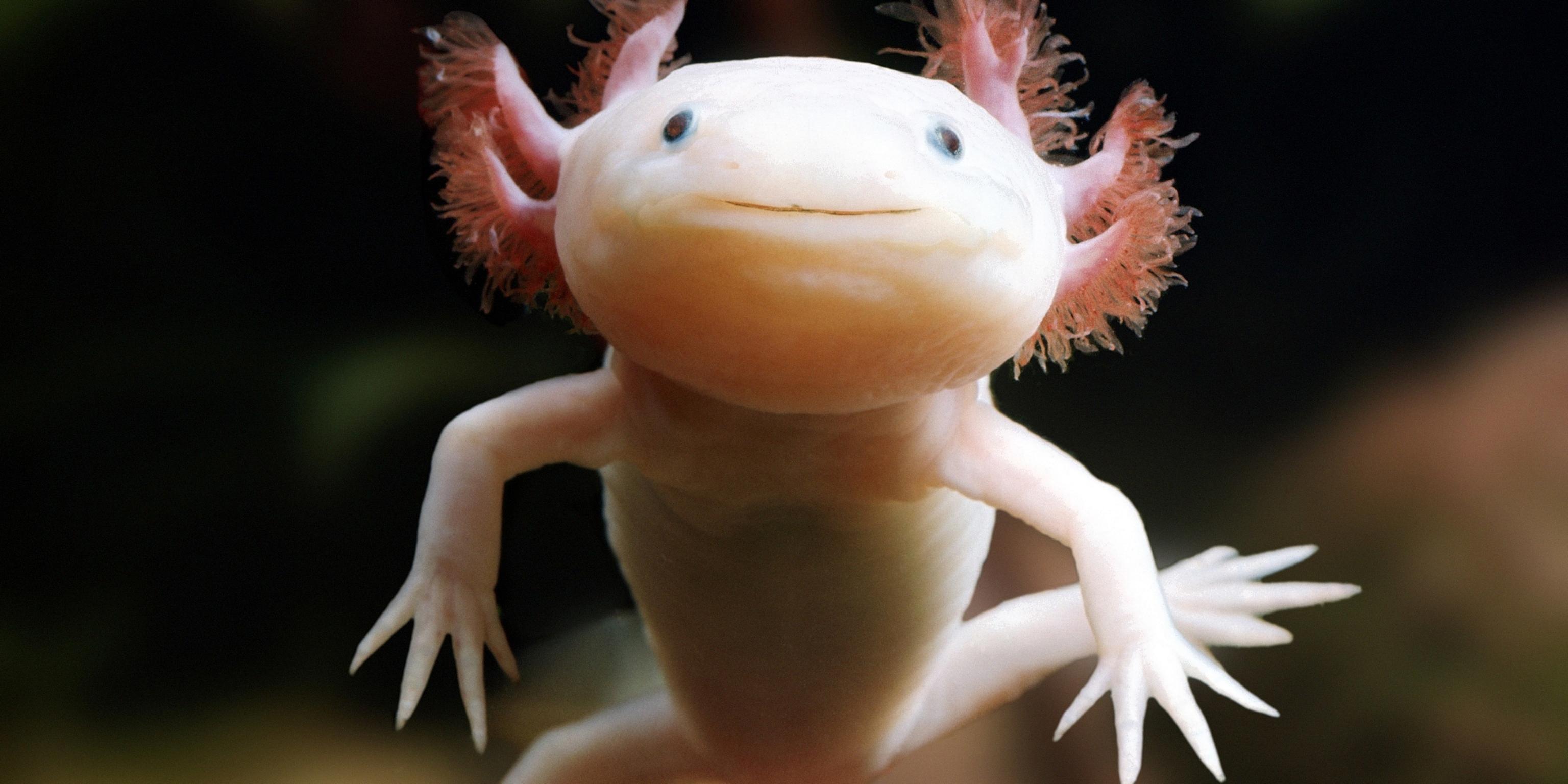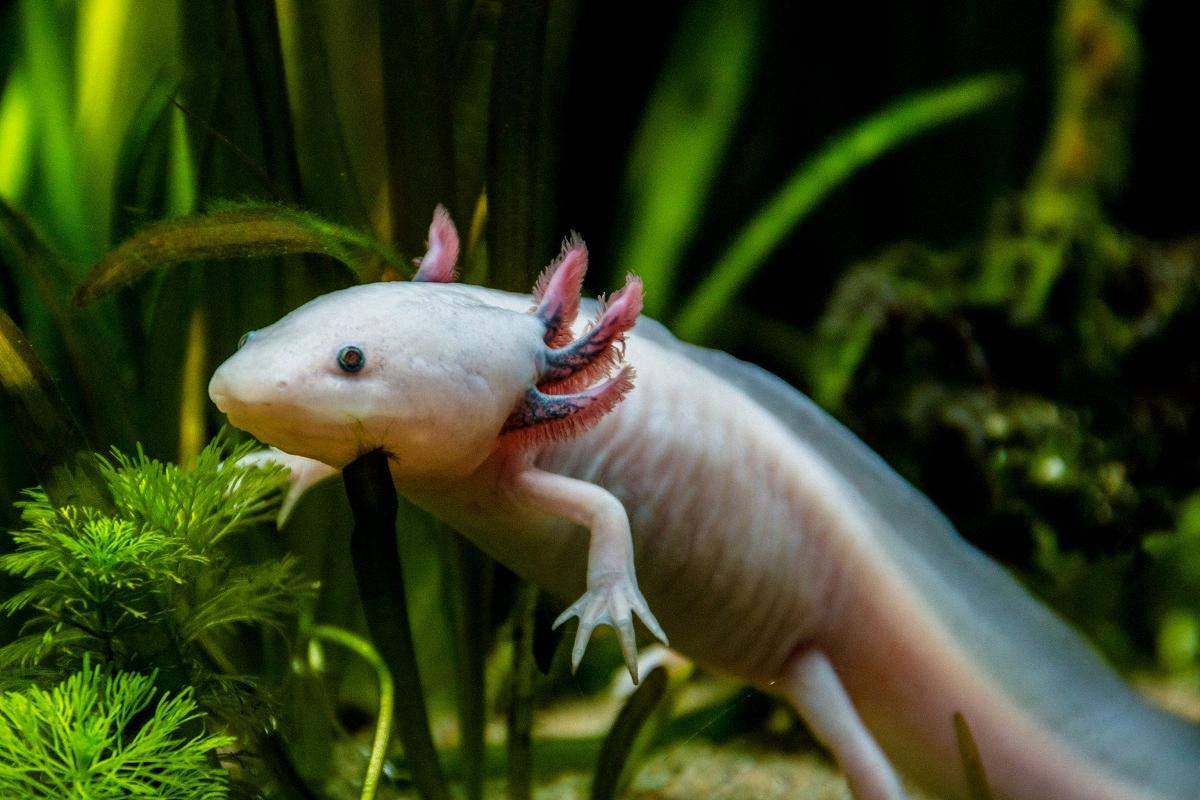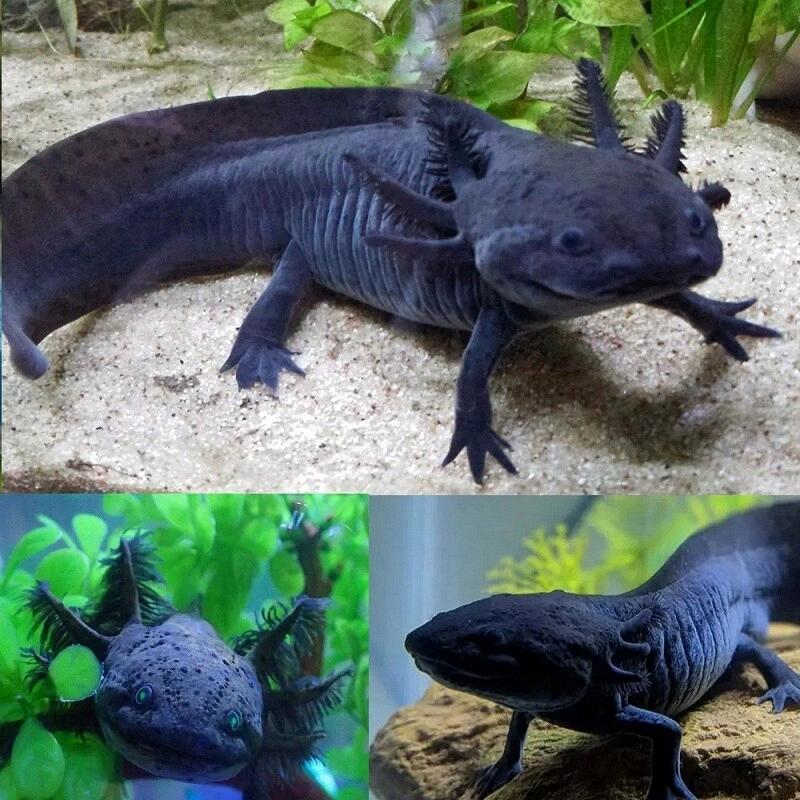Axolotls are unique, fascinating creatures that have become increasingly popular with pet owners in recent years. A part of the salamander family, axolotls are amphibians that live exclusively in freshwater habitats. In fact, they cannot survive in saltwater environments and need to be kept in freshwater tanks. Here’s a closer look at why axolotls need to remain in freshwater and what this means for their care.
Axolotls require a specific water temperature range, pH levels, and other parameters to stay healthy and happy. When kept in an aquarium environment, it’s important to take extra steps to make sure the water is suitable for them. Generally speaking, axolotls do best when the water temperature is between 15-18°C (59-64°F) and the pH level is between 6.5-7.5. It’s also important to use a de-chlorinator if you have chlorinated tap water as chlorine can be harmful to thse creatures.
In addition to requiring specific water conditions, axolotls also need plenty of room for swimming around their tank and exploring its floor during their daily activities. A 15-20 gallon tank is recommended for one or two axolotls – any smaller will leave your pets feeling cramped! You don’t need to add any land areas as these creatures are fully aquatic animals who spend most of their time swimming around its bottom section. As they prefer slow-moving water, you may want to consider usig an external filter or air pump with adjustable flow rate settings so you can adjust it accordingly.
Although they are not social animals by nature, axolotls usually get along well with one another when kept together in a suitable habitat. However, it’s important not to overcrowd them as this could lead to increased stress levels and potential aggression amog individuals living in close quarters together! If you decide to keep multiple axolotls together make sure there is enough space for each one of them so they don’t feel cramped or threatened by each other’s presence.
All in all, when given the right environment axolotls make wonderful pets that bring lots of joy into your life! As long as you provide them with freshwater conditions suitable for their needs and plnty of space for swimming about freely – you should have no problem keeping your new aquatic friends happy and healthy!
Can Axolotls Survive in Tap Water?
No, axolotls cannot live in tap water without de-chlorination first. Tap water typically contains chlorine, which is harmful to axolotls. To ensure the safety of your axolotl, either a de-chlorinator must be used before the water is added to the tank, or the water must be left to stand for 24 hours. If your area uses chloramines istead of chlorine then a de-chlorinator is essential.

Source: nationalgeographic.com
Can Axolotls Live in a Fish Tank?
Yes, axolotls can live in a normal fish tank as long as it is properly setup for them. They prefer tanks with slow-moving water, ideally with a gentle filter that does not create too much of a current. They also need plenty of places to hide and explore, such as rocks, plants, and driftwood. The tank shuld also have a tight-fitting lid to prevent them from escaping. If there are other fish in the tank, make sure they are not aggressive species and provide enough space for the axolotl to retreat if necessary. Finally, since axolotls produce a lot of waste, it is important that the tank has an effective filtration system in place.
The Benefits of Adding Aquarium Salt to an Axolotl’s Tank
No, axolotls do not need aquarium salt. Adding aquarium salt to the water of an axolotl’s tank can be beneficial in some cases as it helps reduce the likelihood of fungus. However, too much salt can be harmful to axolotls and should be avoided. If you choose to add aquarium salt, only do so in very small doses as recommended by a veterinarian or aquatic specialist.
Creating an Ideal Environment for an Axolotl
An axolotl needs at least a 15-20 gallon tank with a secure lid to prevent escape. Axolotls are fully aquatic animals, so there is no need for a land area wihin the tank. A filter system and regular water changes should also be provided to keep the water clean and healthy for the axolotl.
The Lifespan of Axolotls as Pets
Axolotls can live up to 10 years as pets if they are properly cared for. It is important to provide them with an aquatic environment that meets teir needs, including the right temperature and water quality. Proper husbandry and regular maintenance are also essential in order to ensure a long and healthy life for your axolotl. With the right care, your pet axolotl can live a happy life for up to 10 years.

Source: fishlab.com
What Type of Drink Does an Axolotl Consume?
Axolotls shoud be provided with fresh, dechlorinated water as its primary source of drinking. The best way to dechlorinate the water is to use aquarium water conditioner, which can be purchased from most pet stores. After treating the water, it should be changed out every week or so to ensure optimal health for the axolotl. In addition to drinking water, axolotls can also absorb some moisture through their skin, so it’s important to keep the tank properly humidified. A good rule of thumb is to keep the water level at least an inch deep with a few inches of room between the surface and the top of the tank.
What Types of Food do Axolotls Consume?
Axolotls are omnivorous and will eat a variety of foods, including worms, insects, small fish, brine shrimp, California blackworms (Lumbriculus varigatus) and salmon pellets. They will also eat anything else that can fit inside their mouth and swallow whole, such as oter salamanders. In the lab, axolotls are typically fed brine shrimp, California blackworms and salmon pellets.
The Compatibility of Two Axolotls Living Together
Yes, two axolotls can live together as long as they are roughly the same size. While axolotls are not a social species and don’t need a companion for entertainment, it can still be beneficial to house them in pairs. However, it is important to ensure that neither of the axolotls can fit into the other’s mouth, as this may result in one being eaten by the other. It is also important to provide adequate hiding spaces and plenty of space for both axolotls to swim in order to reduce any potential stress.
Feeding an Axolotl
Axolotls can be fed a variety of food items in captivity, including nightcrawlers, blackworms, daphnia, raw meat, brine shrimp and specially formulated pellets. Nightcrawlers are a type of worm that can be purchased from pet stores or bait shops. Blackworms are another type of worm specifically for aquariums. Daphnia is a small crustacean that can be found in many ponds or purchased from pet stores. Raw meat such as beef heart or liver can also be given as an occasional treat. Brine shrimp are also a good choice, as they provide essential fatty acids and proteins. Lastly, specially formulated pellets shold make up the majority of the diet as they have been designed to meet the nutritional needs of axolotls.
Do Axolotls Prefer Sand or Rocks for Substrate?
Axolotls prefer sand as their substrate, as it is soft and proides them with a comfortable surface to move around on. Rocks can cause abrasions or cuts on the axolotl’s skin, so they should be avoided. Sand also passes through the digestive system of even small individuals without any issues, while rocks may cause blockages. Furthermore, the axolotl can grip onto sand more easily than rocks, helping them stay in place while they roam around the aquarium.
Do Axolotls Need Regular Bathing?
Yes, axolotls need baths. It is important to give them a salt bath twice daily during an infection, for 10 minutes at a time. To do this, mix 1-2 liters of dechlorinated water with sea, rock, or aquarium salt. This will help keep their skin healthy and reduce the risk of infections.
Do Axolotls Need Worms as Food?
Yes, axolotls need worms in order to stay healthy and happy. Worms are the best source of nutrition for them and should be given as their primary food source, starting from when they reach 3 months of age. Earthworms provide essential nutrients like protein, fat, minerals and vitamins which are essential for the growth and development of an axolotl. Feeding them with anything other than earthworms can lead to serious health problems or even death. It is therefoe important to ensure that your axolotl always has access to a healthy supply of live earthworms.
Can Axolotls Jump Out of Tanks?
Yes, axolotls can jump out of the tank surprisingly well! This means it is important to keep a lid on your aquarium at all times. Additionally, an external canister style filter typically works best for cleaning the water, but it is important that it has an attachment to spread the water outflow in a gentle way, such as a spray bar. Axolotls do not tolerate strong water flow like most fish.

Source: cloningaquapets.com
Do Axolotls Bite?
Axolotls have very small, weak teeth that are not designed for biting or tearing flesh. As such, they generally do not bite people and are considered to be harmless to humans. However, if they feel threatened, they may attempt to latch on with their limited teeth or clamp down with their powerful jaws. Therefore, it is best to avoid handling axolotls whenever possible and use caution when doing so.
How Long Can an Axolotl Survive Out of Water?
An axolotl can survive out of water for up to 1 hour prvided that it is kept in a moist and damp environment. As they are aquatic creatures, they require the moisture to keep their skin hydrated and their gills functioning properly. Be mindful that if the axolotl is exposed to dry air, it will quickly lose its moisture and become distressed, so make sure you provide a suitable environment for your pet.
Conclusion
In conclusion, axolotls are freshwater-dwelling amphibians that require a specific environment to thrive. They should be kept in an aquarium with slow-moving water and do not need an area of land in their enclosure. It is essential to use a de-chlorinator for tap water or leave it standing for 24 hours to remove chlorine before adding it to the tank, otherwise it may harm the axolotl. Lastly, salt should not be added to the water as too much salt can be detrimental to their health. With the proper care and environment, axolotls can make wonderful pets.
